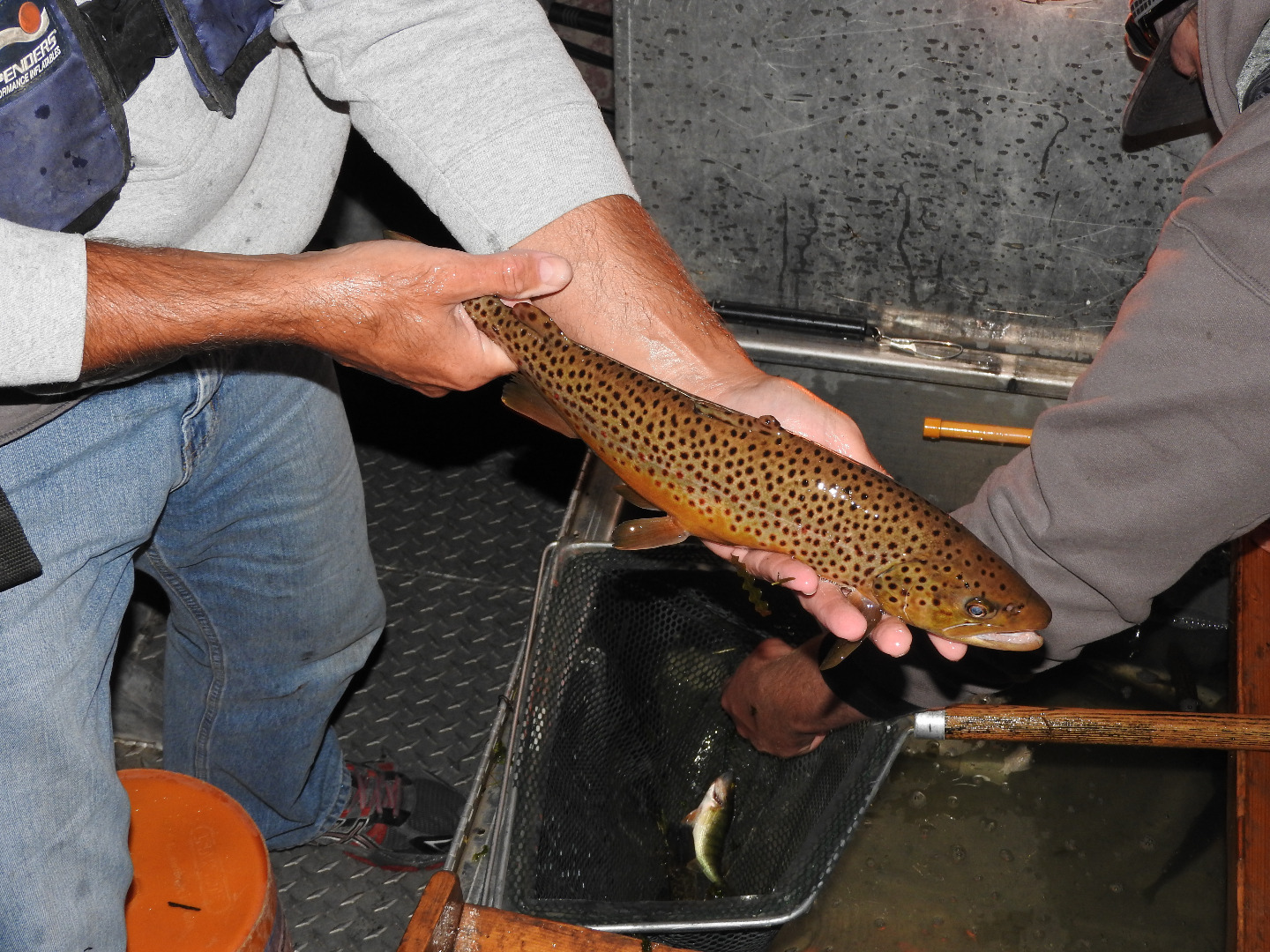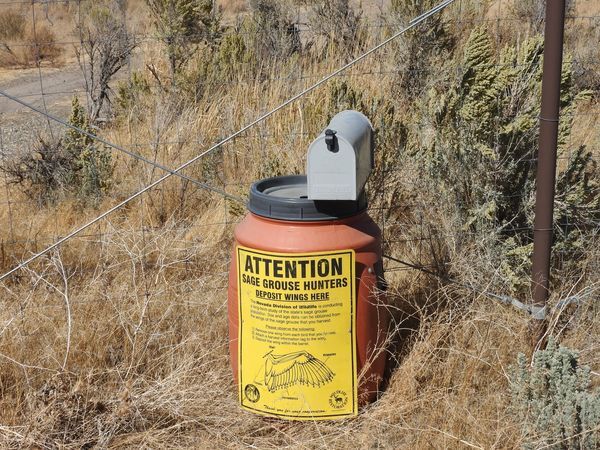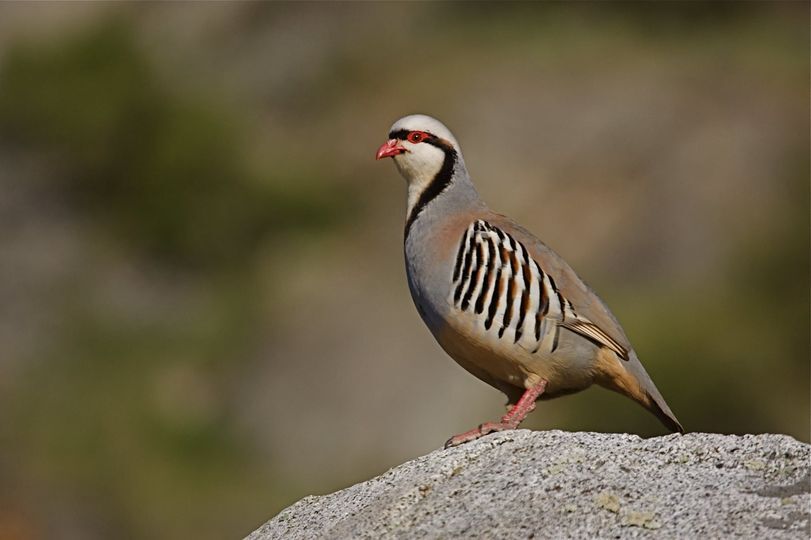Fish Report for 9-25-2020
NDOW Eastern Fishing Report

by Nevada Department of Wildlife
9-25-2020
Website
Autumn is here and it appears that things have finally started to cool down. Great news for trout anglers, and believe it or not, bass anglers. While bass do like warmer water, several state record bass have been caught in October and November! This time of year, large bass aggressively feed preparing for the very cold water of winter.
Bass are more territorial than trout, often living in the same part of the lake year-round, just moving offshore to deeper water for the winter and moving back into shore when the water warms up in the spring and summer. They are ambush hunters preferring cover to help them stalk their prey.
Bass are primarily piscivorous, feeding on fish instead of invertebrates, but like any predator are opportunistic and will take any food that comes their way.
In the fall, they will often hang on weed bed edges, along with trout, feeding on leeches that are coming out of the dying weed beds. Other smaller fish that feed on the aquatic invertebrates that are losing their homes in the weed beds also fall victim to bass.
Earlier this week, while electro-surveying Wildhorse Reservoir, lots of young perch were contacted in the backs of weedy coves. Smallmouth bass were also in these coves chasing the perch. Hint, hint.
Early fall finds crayfish shedding their exoskeletons, which have become too small, and looking for muddy bottoms to burrow in as they prepare to hibernate for the winter. Bass will prowl these muddy flats targeting the soft bodied crayfish found there this time of year.
Trout will often follow the same contour around a lake until they a find target rich area where aquatic insects are active. This time of year, chironomids (midge larva) are active and in our high desert reservoirs make up almost 80% of a rainbow trout’s diet.
Chironomids like muddy bottoms to burrow in to develop. As they outgrow a burrow, they will collect oxygen in their body, using it to produce a bubble to help lift them out of their burrow. Once out they float with the current. Depending upon what stage of their life cycle they are in, they either settle back to the bottom to dig a bigger burrow or use the bubble to float to the surface and hatch as an adult.
The oxygen the chironomids collect oxygenates their blood, turning it red, hence the name “blood worms,” which is why many chironomid patterns have a white bead at the top (the bubble) and a red thread body with black ribbing.
Obviously, muddy flats in three to 10 feet of water are great places to target trout this time of year. Especially as the water cools down into the magic range discussed last week, between 56 and 64 degrees.
Fishing has been fair to good all summer. Fair for bait anglers and good for fly rodders. It is picking up as the trout prepare for the long cold winter under the ice. The usual worms under a bobber or fished off the bottom with a slip sinker should work as should small spinners and rooster tails. Give the spinners and rooster tails a few seconds to sink before starting to reel them in. If using a bobber, put your bait about 18-inches to two feet below the bobber. For fly rigging a dry and a dropper is working very well. Good flies for the dry are hoppers, yellow stimulators and humpies. Yellow or red seem to be the colors that work best for dries and olive or peacock for the droppers. When the lighter patterns aren’t working, switch to black gnats, black or olive Adams and elk hair caddis, or Griffith’s gnats. Wet flies to try, include flashback PT nymphs, small black or olive wooly or crystal buggers, olive or peacock soft hackles, red/silver zebra midges, hares ears and small leech patterns. Angel Lake was stocked with approximately 2,100 rainbow trout the first week of September.
Fishing at Cave Lake has been fair for eight to 10-inch trout, but the water level is low from a drawdown due to concerns with the dam. The shorelines are muddy and very soft making walking and fishing difficult. The usual small nymphs and crystal buggers are working for trout, with beadhead pheasant tail nymphs being very effective. For bait anglers, fishing a worm about four feet below a bobber or using powerbait floated off the bottom with a slip sinker seems to be the best bets. The float tube launching area is closed and anglers should fish at the north end of the lake near the dam and main boat launch area.
The water level is very low but fishing is fair to good for both trout and bass. Best times seem to be early morning here as the trout can be seen taking insects off the surface. Worms, PowerBait, small spinners and flies should all work if the fish are cooperating. Small dark colored dry flies first thing in the morning are working. Griffith’s gnats, black gnats, black Adams and ant patterns should be tried.
Comins Lake has water temperatures in the low 60’s with both trout and bass fishing being fair to good. Fly fisherman should use wooly buggers, leech patterns, and nymphs patterns (midges, beaded pheasant tails…etc.) fished under an indicator. Bass fishing is still good and anglers are reporting decent sized bass using soft plastics, crankbaits and poppers on quiet evenings and mornings. If you catch a pike, please check to see if it has a radio transmitter tag near the tail. If it does, please return the fish to the water so that NDOW biologists can track its movements. If it doesn’t have the transmitter tag, please humanely dispatch the fish. Don’t put it back in the lake.
Water surface temperatures are dropping into the low 60’s and trout fishing is good. The usual flies like wooly buggers, prince nymphs, hares ears and chironomid patterns should all work. Small spinners, PowerBait and worms should be effective as well. The brown trout in the lake will start heading into the stream for the fall spawn over the next few weeks, so anglers may want to target the south end of the lake where the stream enters the lake.
Little or no change here. The water level is down due to irrigation, but normal for this time of year and with the weed growth, fishing from shore is still difficult. Anglers should plan on fishing from a small boat or float tube and cast back towards the weeds for bass but hit the deeper water for trout. Trout fishing is slow while bass fishing is fair to good. The usual PowerBait and worms as well as small spinners are working for trout. Fly rodders should be using chironomids, hares ears, PT nymphs, copper Johns, and black or olive wooly buggers. Bass are hitting soft plastics, crankbaits and occasionally poppers first thing in the morning or late in the evening.
The water level is very low and fishing is fair to poor. Due to low hot water this summer there was a trout die-off so trout fishing is nonexistent at this time. Bluegill and bass fishing are just fair.
MOUNTAIN STREAMS
Hoppers, caddis and stoneflies are still out and about, and trout continue to hit dry flies. Fishing continues to be good at the beaver ponds in Lamoille Canyon and other streams in the area. Most streams in eastern Nevada have below average flows so anglers will want to target beaver ponds and plunge pools when fishing them. As of September 24, the East Fork of the Owyhee flowing at half of normal at 14 cubic feet/second (cfs), the Bruneau River at 8 cfs, the Jarbidge at 5 cfs, Salmon Falls Creek at 34 cfs, Lamoille Creek flowing at a very low 2 cfs, the South Fork of the Humboldt at a third of normal for this time of year at 4 cfs, Cleve Creek at 5 cfs, Steptoe Creek at 3.5 cfs and Kingston Creek well below normal at 2.5 cfs.
HIGH ALPINE LAKES
Access to the alpine lakes in the Ruby Mountains and East Humboldt’s is good. The fish in these high mountain lakes are very cooperative and the further you get from the trailhead the better the fishing. With shorter days the fish are putting on the feedbag anticipating the long winter ahead. Bait anglers will find that, as a general rule, worms and hoppers seem to work better than PowerBait. Small spinners in dark colors with light contrasting highlights, as well as small panther Martins and rooster tails also are effective. For flyrodders small yellow or red dry flies such as stimulators, hoppers, elk hair caddis and humpies with a soft hackle or other nymph dropper is the way to go. In low light conditions darker colored flies such as black gnats, ants, beetles and Griffith’s gnats should be used. Be prepared for nights below freezing if camping at these elevations.
The water level is very low and weeds are coming on strong, but you can still launch a boat at the main boat landing. However, launching anything but a canoe or kayak at the Narciss boat launch is not recommended. Bass fishing is good for numbers and fair to good for keepers, though the catch rate is starting to drop off with the cooler water temperatures. Get out for bass fishing here while you can. It will start to drop off quickly. The best tactic seems to be four-inch soft plastic jigs rigged weedless. Dark colors such as black, blue, motor oil and guacamole with flashy flakes in them seem to work the best. Poppers on a quiet evening or morning with no wind as the shadows are hitting the water along the cattail edges are also working. With low water conditions and lots of weeds, fishing is fair at the collection ditch for 13 to 18-inch trout, with the occasional large trout being taken. Small brightly colored spinners were doing well. Trout are taking dries including damselfly adults, hoppers, yellow stimulators and elk hair caddis. Yellow seems to be the key. Other flies working include the usual small nymphs such as PT’s, hares ears, olive soft hackles, red or blue copper Johns and prince nymphs. Wooly and crystal buggers in black, purple or olive are also working. In the crystal, clear water of the collection ditch, if you can see the fish, they can see you. Go low, slow and wear drab clothing.
Fishing for trout has been fair, while bass fishing has been fair to good. Surface water temperatures are in the low to mid 60’s depending upon location and time of day. Algae is still fairly thick, but should start receding soon. Aquatic plants should start receding as we move into October. Fly fishermen fishing chironomids (midge larvae) or small nymphs in black or red under an indicator are finding success. Fishing snow cones and midge larva a foot off the bottom in four to 10 feet of water is working well. Trout being are moving into the coves as the water cools and fishing from shore has definitely improved. Bass fishing has been good for both smallmouth and largemouth using soft plastic baits in dark colors near structure. Fishing below the dam in the river has been slow. The state park campground is open at 50% of capacit
The water level is average for this time of year and cooling into the low 60’s. Fishing is fair to good for 12 to 15-inch trout and for bass. Just like other reservoirs, the trout are starting to move up a bit in the water column and into shallower water. Black leeches have been working for both trout and bass along the weed beds. Chironomid patterns are also working for trout. For the most part, the same presentations that are used at South Fork, should work here.
The water level is average for this time of year, but weeds and algae are still present. Fishing is fair for 12 to 15-inch trout and fair to good for bass. Just like other reservoirs, the trout are starting to move up a bit in the water column, but still holding around 10 feet. Fishing in the canyon by the dam has been fair to good for trout. Black leeches have been working for trout, but also have been very good for bass. For the most part, the same presentations that are used at South Fork, should work here.
More Reports

9-25-2020
Tomorrow, Sept. 26, 2020, is opening day of sage grouse season in many areas around Nevada. We would appreciate hunters...... Read More

9-24-2020
What better way to celebrate National Hunting and Fishing Day this Saturday than by taking your kids chukar or waterfowl...... Read More

Website Hosting and Design provided by TECK.net